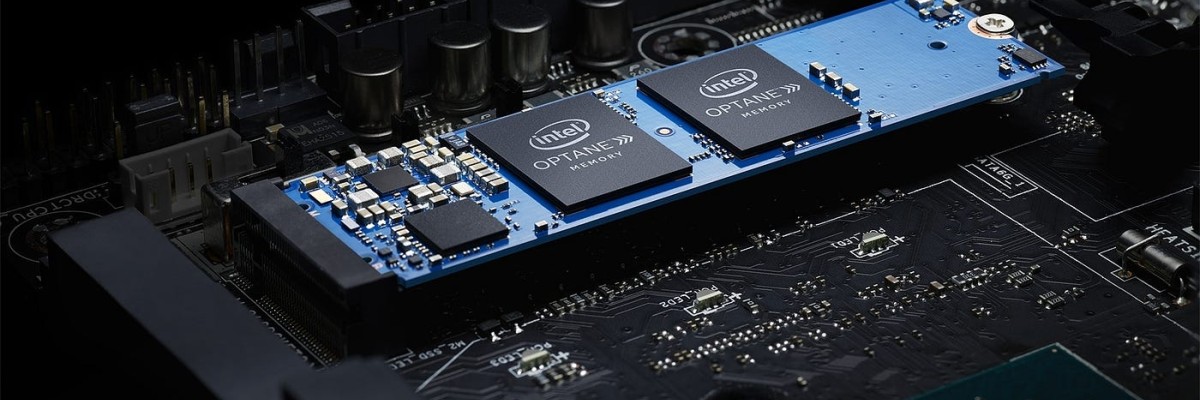
DDR6 RAM: The Next-Gen Future Of Computing | Explained | TLG Gaming
In the rapidly evolving world of technology, the advancements in memory solutions are among the most exciting. Over the years, we've seen a continuous progression in memory technology, from the early days of DRAM to today's sophisticated solutions. Each generation of RAM (Random Access Memory) has enhanced performance, efficiency, and capacity. As we approach another significant milestone, DDR6 RAM promises to redefine computing. This blog will delve into the details of DDR6 RAM, its anticipated features, potential impacts, and the future it brings.
The Evolution of DDR Memory
From DDR to DDR5: A Quick Overview
Dynamic Random Access Memory (DRAM) has seen several stages of evolution, marked by the introduction of Double Data Rate (DDR) technology:
DDR (DDR1): Launched in 2000, DDR memory doubled the data rate of Single Data Rate (SDR) memory by transferring data on both the rising and falling edges of the clock signal.
DDR2: Released in 2003, DDR2 offered higher clock speeds and improved performance through enhancements in the memory architecture, such as prefetch buffers.
DDR3: Introduced in 2007, DDR3 increased data transfer rates and reduced power consumption, becoming a mainstay in computing devices for years.
DDR4: Arriving in 2014, DDR4 brought significant improvements in speed, efficiency, and capacity, becoming the standard for modern computing.
DDR5: The most recent in the DDR series, DDR5, introduced in 2020, further increased bandwidth and efficiency, supporting higher capacities and preparing for more advanced computing applications.
The Potential of DDR6
DDR6 RAM, currently in development, is expected to build upon the advancements of its predecessors. With anticipated improvements in speed, power efficiency, and data integrity, DDR6 is set to meet the increasing demands of high-performance computing, artificial intelligence, gaming, and more.
Post Tech Day Announcement From Samsung
At Tech Day 2021, Samsung discussed the future of memory technology, specifically focusing on DDR6 and its advanced version, DDR6+. They shared exciting details about these upcoming standards.
Using JEDEC's official specifications as a reference, DDR5 saw a significant speed increase, doubling the maximum data rate from 3,400 MT/s in DDR4 to 6,400 MT/s. Samsung anticipates a similar leap for DDR6, predicting speeds up to 12,800 MT/s, known as DDR6-12800.
However, these JEDEC-specified speeds represent only the baseline. Overclocked (OC) modules are expected to surpass these limits. With carefully selected memory chips (ICs), overclocked DDR6 modules could reach impressive speeds of up to 16,800 MT/s, designated as DDR6-16800.
| JEDEC standard | ||
|---|---|---|
| DDR | up to 400 MT/s | up to 533 MT/s |
| DDR2 | up to 1,066 MT/s | up to 1,333 MT/s |
| DDR3 | up to 2,133 MT/s | up to 2,666 MT/s |
| DDR4 | up to 3,200 MT/s | up to 5,333 MT/s |
| DDR5 | up to 6,400 MT/s | up to 8,4000 MT/s |
| DDR6* | up to 12,800 MT/s | up to 16,800 MT/s |
* speculated (not confirmed)
4 Memory Channels
The number of memory channels per module in DDR6 will increase to four, doubling from DDR5. Additionally, the number of memory banks will rise to 64, representing a fourfold increase compared to DDR4.
Examining the cross-generational improvements in memory bandwidth, DDR6 shows substantial growth:
- DDR: up to 3.2 GB/s
- DDR2: up to 8.5 GB/s
- DDR3: up to 17.0 GB/s
- DDR4: up to 28.8 GB/s
- DDR5: up to 67.2 GB/s
- DDR6: up to 134.4 GB/s+
Based on current projections, DDR6 modules will offer at least 134.4 GB/s of memory bandwidth, with overclocked modules expected to deliver even higher throughput.
Key Features of DDR6 RAM
Exceptional Speed
A primary advancement anticipated with DDR6 RAM is a significant increase in data transfer rates. While DDR5 already achieves impressive speeds, DDR6 is projected to double the bandwidth, potentially reaching speeds of up to 12,800 MT/s (mega-transfers per second) or higher. This speed boost will enhance the performance of data-intensive applications, allowing for smoother multitasking, faster data processing, and an overall more responsive computing experience.
Enhanced Power Efficiency
Each new generation of memory focuses on improving power efficiency, and DDR6 is no exception. It is expected to feature advanced power management techniques to reduce energy consumption, even as performance increases. Lower power consumption is especially important for mobile devices and data centers, where energy efficiency translates to longer battery life and lower operational costs, respectively.
Increased Capacity
DDR6 RAM is anticipated to support higher memory capacities per module, potentially reaching up to 128GB per DIMM (Dual In-line Memory Module). This increase in capacity is crucial for applications that require large amounts of memory, such as big data analytics, virtual machines, and complex simulations. Higher capacity modules will also enable the development of more powerful and efficient computing systems.
Improved Data Integrity and Reliability
DDR6 is expected to incorporate advanced error-correcting code (ECC) mechanisms and other data integrity features to ensure reliable data transmission and storage. These improvements are essential for mission-critical applications where data accuracy and reliability are paramount.
Compatibility and Scalability
Despite its significant advancements, DDR6 is designed to maintain compatibility with existing memory technologies and standards. This backward compatibility ensures a smoother transition for consumers and businesses upgrading their systems. Additionally, DDR6 will be scalable, allowing it to meet the evolving needs of various computing environments, from personal devices to large-scale data centers.
The Impact of DDR6 RAM on Various Industries
High-Performance Computing (HPC)
High-performance computing applications, such as scientific simulations, climate modeling, and financial analysis, require immense computational power and memory bandwidth. DDR6 RAM's increased speed and capacity will significantly enhance the performance of HPC systems, enabling more complex simulations and analyses to be conducted more quickly and accurately.
Artificial Intelligence and Machine Learning
AI and machine learning workloads are notoriously demanding, requiring vast amounts of data to be processed in real-time. DDR6 RAM will provide the necessary bandwidth and efficiency to support these workloads, facilitating faster training times for machine learning models and more responsive AI applications.
Gaming and Virtual Reality
The gaming industry stands to benefit greatly from DDR6 RAM advancements. Modern games require substantial memory bandwidth to handle high-resolution textures, complex physics, and immersive environments. DDR6 will enable smoother gameplay, reduced latency, and enhanced graphical fidelity. Additionally, virtual reality (VR) experiences will become more seamless and immersive with the improved performance of DDR6 memory.
Data Centers and Cloud Computing
Data centers and cloud computing platforms rely heavily on memory performance to handle vast amounts of data. DDR6 RAM's increased capacity and efficiency will allow data centers to manage larger workloads more effectively, improve service delivery, and reduce energy consumption. This will also enable cloud providers to offer more powerful and cost-effective services to their customers.
Autonomous Vehicles
The development of autonomous vehicles relies on the ability to process and analyze data from various sensors in real-time. DDR6 RAM will provide the necessary speed and reliability to support these data-intensive operations, enhancing the safety and performance of autonomous driving systems.
Challenges and Considerations
Manufacturing Complexity
As memory technology advances, the complexity of manufacturing these components increases. DDR6 RAM will require more sophisticated fabrication techniques, which could lead to higher production costs and potential supply chain challenges. Manufacturers will need to invest in new equipment and processes to meet the demands of DDR6 production.
Heat Dissipation
With increased performance comes the challenge of heat dissipation. DDR6 modules will generate more heat, necessitating improved cooling solutions to maintain optimal operating temperatures. Effective thermal management will be critical to ensuring the reliability and longevity of DDR6 memory.
Adoption and Compatibility
While DDR6 will offer significant benefits, the adoption of new memory technology typically takes time. Compatibility with existing systems and infrastructure will be a key consideration for consumers and businesses looking to upgrade. Manufacturers will need to ensure that DDR6 modules can seamlessly integrate with current platforms to facilitate widespread adoption.
Cost Implications
As with any new technology, the initial cost of DDR6 RAM is likely to be higher than that of its predecessors. This could impact early adoption, particularly for budget-conscious consumers and small businesses. However, as production scales and the technology matures, prices are expected to decrease, making DDR6 more accessible over time.
The Road Ahead
Research and Development
The development of DDR6 RAM is an ongoing process, with industry leaders and researchers working tirelessly to bring this technology to market. Collaborative efforts between memory manufacturers, semiconductor companies, and research institutions are essential to overcoming the technical challenges and realizing the full potential of DDR6.
Standardization
The standardization of DDR6 specifications is a crucial step in its development and adoption. Industry bodies such as JEDEC (Joint Electron Device Engineering Council) play a pivotal role in establishing the standards that ensure interoperability and compatibility across different manufacturers and platforms. Once standardized, DDR6 will be poised for broader adoption and integration into various computing systems.
Market Readiness
As DDR6 RAM approaches commercialization, market readiness will be a key factor in its success. This includes not only the availability of DDR6 modules but also the readiness of supporting hardware, such as motherboards and processors, to fully leverage the capabilities of DDR6 memory. Collaboration between hardware manufacturers will be essential to ensure a smooth rollout.
Conclusion
DDR6 RAM represents the next frontier in memory technology, promising unprecedented speed, efficiency, and capacity. Its potential to transform various industries, from high-performance computing to gaming and autonomous vehicles, is immense. However, the journey to widespread adoption will require overcoming technical challenges, ensuring compatibility, and managing costs. As research and development continue, and standardization efforts progress, the future of DDR6 RAM looks promising. The advent of DDR6 will undoubtedly propel the computing world into a new era of performance and capability, opening up possibilities that were once beyond our reach.
In the ever-evolving landscape of technology, DDR6 RAM stands as a testament to human ingenuity and the relentless pursuit of progress. As we eagerly anticipate its arrival, one thing is certain: the future of computing is brighter and faster than ever before. For more information and updates on the latest memory technologies, visit TLG Gaming's memory section.
